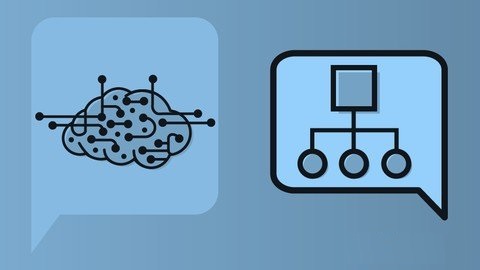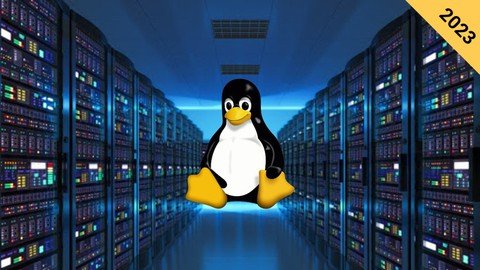Sap S/4Hana Sales (Sd - Sales And Distribution)
Published 2/2023
MP4 | Video: h264, 1280x720 | Audio: AAC, 44.1 KHz
Language: English | Size: 29.65 GB | Duration: 68h 26m
The course covers both configuration and end-user processes for SAP S/4HANA Sales (Sales and Distribution)
What you'll learn
Configuration and End-User activities for SAP S/4HANA Sales
O2C - Order to Cash Cycle Processes on SAP S/4HANA Business Suite
Be able to take SAP S/4HANA Sales Certification exam
To understand how required business processes run related to SAP S/4HANA SD
Required SAP S/4HANA Finance & Controlling configuration for SAP S/4HANA SD
Integration of SAP S/4HANA Sales with FICO, MM and PP modules
Master Data related to Customer, Material, and Conditions
Order types, Item Categories, Scheduling line categories
Availability Check, Transfer of Requirements, and MRP Run
Sales Order Costing
Bill of Material and Production Planning
Logistics Execution - Delivery types, Picking, Packing, and Post Goods Issue
Billing Plans - Periodic Billing and Milestone Billing
Material Classification, Batch Management and Classification, and Batch Split
Working through SAP Fiori Apps related to SAP S/4HANA Sales
Copying Control for Sales Documents Configuration
Master Contract, Quantity and Value Contracts
Pre-Sales Activities - Inquiry and Quotation and different Sales Processes as an En-User
Customer Consignment Stock, and SAP S/4HANA Credit Management
Rebate Agreement, Intercompany Billing, Stock Transfer
Requirements
Access to SAP system
Description
The course will prepare the students to learn and understand all the necessary end-to-end implementation steps to configure SAP S/4HANA Sales 2021, previously known as SAP SD (Sales and Distribution), along with End-User activities for any organization.After this course, the students will be able to identify and analyze the business requirements for any organization related to the Order to Cash process cycle and to configure SAP S4 HANA Sales accordingly.After taking this course, the Learners will be able to work both as a Consultant and End-User and can also take SAP S/4HANA Sales 2021 certification exam i.e., C_TS462_2021.Most of the lectures under each Section can easily be identified for 'Configuration' and 'End-User' activities, so if you are interested in the End-User training only, then you can filter those lectures easily.Here are the highlights of the course:- Section 1 is about the SAP S/4HANA Business Suite and its HANA database capabilities including SAP Fiori as New User Interface- Section 2 demonstrates Business Requirements, SAP Activate Methodology, and kicks-off the configuration from the Enterprise Structure on SAP S/4HANA Business Suite- Section 4 makes this course unique by demonstrating the configuration of SAP S/4HANA Finance and Controlling module that is required to work on SAP S/4HANA Sales module and you will not easily find this information in most of the other training courses- Section 6 demonstrates the configuration and creation of Business Partner master data including Customer and Vendor master data- Section 7 demonstrates the configuration for Material master data and then shows how to create a Material master- Section 8 demonstrates the Material classification and Batch Management- Sections 10, 11, and 12 are important in terms of understanding the configuration related to Sales document types, Item categories, Schedule line categories, and Movement types- Sections 13 and 14 are about the integration between Finance module with Materials Management and Sales and Distribution- Sections 15 and 16 show the configuration of Sales Pricing Procedure and Pricing Condition RecordsSections 18, 19, 20, 21, and 22 demonstrate the configuration of Material availability check and then transfer its requirements to the Production and Purchasing department, if the material quantity is not available in the stock as per the Customer s sales order, with planned dependent and planned independent requirements- Sections 24 and 25 show the configuration and end-user activities related to Outbound delivery to the Customer and Sales billing/invoice- Sections 26 and 27 kicks off the demonstration of the typical sales processes such as Inquiry, Quotation, and Sales Contracts- Sections 28 and 29 continue with the demonstration of the sales processes such as Customer Returns, Credit Memo Request, Debit Memo Request, Cash Sale, Rush Order, Free Goods, Cross Selling etc.- Section 30 demonstrates the processes around Sales Billing such as Billing plan types of Periodic Billing and Milestone Billing along with the process of Pro Forma Invoicing- Sections 31 and 32 demonstrate the processes around Customer Consignment Stock, Sales Rebate Agreement, and Sales Promotions and Deals- Section 34 is important to understand how Serial numbers for Products can be created. The same section demonstrates the processes around Outbound delivery without Order, and Material BOM Usage with Sales and Distribution- Section 35 demonstrates the process for Intercompany Billing when there are transactional activities between two different company codes and Section 36 shows how the stocks can be transferred from one Storage location to another, from one Plant to another, and from one Company code Plant to another Company code Plant- Section 37 shows the processes around Customer Credit Management and Customer Payment, as the Customer Payment is the final part of Order to Cash cycle- Section 38 finally shows how the Reporting and Data analysis activities can be done through SAP Gui, Universal Journal, and SAP Fiori Analytical apps- Section 39 gives you the information on Certification Exam on SAP S/4HANA SalesDisclaimer: SAP or other products of SAP mentioned in the training is a trademark or registered trademark of SAP SE, Germany. I am not related or affiliated with that.
Overview
Section 1: Introduction to the Course and SAP S/4HANA Business Suite
Lecture 1 Introduction to the Course
Lecture 2 Overview of the Course Content
Lecture 3 Introduction to SAP S/4HANA Business Suite
Lecture 4 Introduction to SAP Gui - User Interface
Lecture 5 Introduction to SAP Fiori - New User Interface
Section 2: Business Requirements, and Enterprise Structure (Configuration)
Lecture 6 Business Requirements for SAP S/4HANA Sales (High-level)
Lecture 7 Types of Projects
Lecture 8 Introduction to SAP Activate Methodology
Lecture 9 Client Definition (Configuration)
Lecture 10 Enterprise Structure (FI) - Company Code (Configuration)
Lecture 11 Company Code Global Parameters (Configuration)
Lecture 12 Enterprise Structure (FI) - Business Areas (Configuration)
Lecture 13 Enterprise Structure (FI) - Company (Configuration)
Lecture 14 Customizing Requests Transport Organizer
Lecture 15 Enterprise Structure - Logistics General (Configuration)
Lecture 16 Enterprise Structure - Sales and Distribution (Configuration)
Lecture 17 Enterprise Structure - Materials Management (Configuration)
Lecture 18 Enterprise Structure - Logistics Execution (Configuration)
Lecture 19 Enterprise Structure - Consistency Check for Sales and Distribution
Section 3: Fiscal Year, Posting Period Variant, and Period for Material Master Records
Lecture 20 Business Requirements, Variant Principle, and Fiscal Year Variant (Config)
Lecture 21 Posting Period Variant (Configuration)
Lecture 22 Open and Close Posting Periods for Business Areas (Configuration)
Lecture 23 Open/Close Period for Material Master Records (Configuration and End-User)
Section 4: Required Finance & Controlling Configuration and End-User activities
Lecture 24 Chart of Accounts, G/L Accounts & Field Status Variant/Group (Config & End-User)
Lecture 25 G/L Accounts List Display (End-User)
Lecture 26 Classify GL Accounts for Document Splitting (Configuration)
Lecture 27 Define Segments (Configuration)
Lecture 28 Business Scenario & Maintain Controlling Area (Configuration)
Lecture 29 Profit Center Accounting (Configuration)
Lecture 30 Profit Center Master Data with Standard Hierarchy (End-User)
Lecture 31 Cost Center Master Data with Standard Hierarchy (End-User)
Lecture 32 Cost Element as G/L Account Master Data (End-User)
Lecture 33 Currency Settings, Maintain Exchange Rates, Ledger Configuration (Configuration)
Lecture 34 G/L Accounts Determination for Open Items Exchange Rate Differences (Config)
Lecture 35 Tax on Sales/Purchases (Configuration)
Lecture 36 Tolerance Limits for Users, G/L Accounts, Customer and Vendor (Configuration)
Lecture 37 Activation of Material Ledger (Configuration)
Section 5: SAP User Parameters, Parameter ID, and SAP Fiori Default Values (End-User)
Lecture 38 SAP User Parameters, and Parameter ID (End-User)
Lecture 39 SAP Fiori Default Values (End-User)
Section 6: BP, Customer and Vendor Master in SAP S/4HANA Sales (Configuration and End-User)
Lecture 40 Business Scenario and Definition of Master Data
Lecture 41 Obsolete T-codes and BP Transaction code and its hierarchy (End-User)
Lecture 42 Customer Account Groups, Field Status, Number Ranges (Configuration)
Lecture 43 BP Number Ranges, Grouping, Field Status, BP Roles (Configuration)
Lecture 44 Number Assignment for Direction BP to Customer (Configuration)
Lecture 45 Sales and Distribution Customer Partner Determination (Configuration)
Lecture 46 Terms of Payment, Incoterms and other Customer Master Configuration
Lecture 47 Creation of Business Partner and Customer Master Data (End-User)
Lecture 48 SAP Fiori BP Customer Master Data Creation (End-User)
Lecture 49 Creation of One-time BP Customer Master (End-User)
Lecture 50 Extend the Customer Master to Second Company code and Sales Area (End-User)
Lecture 51 Summary - Display Customer List - SAP Fiori (End-User)
Lecture 52 Supplier Master Business Scenario, Hierarchy and Tables
Lecture 53 Supplier Account Groups, Field Status, Number Ranges (Configuration)
Lecture 54 Business Partner for Supplier Master Data (Configuration)
Lecture 55 Supplier Master Partner Roles/Schemas (Configuration)
Lecture 56 Creation of BP and Supplier Master Data (End-User)
Lecture 57 SAP Fiori - BP and Supplier Master Data Creation (End-User)
Lecture 58 Create a Supplier Master through Copy Function in SAP Fiori (End-User)
Lecture 59 Summary - Display Supplier List - SAP Fiori (End-User)
Section 7: Material Master, Material Types, Material Groups, Pricing, Product Hierarchy
Lecture 60 Business Scenario and Introduction to Material Master
Lecture 61 Overview of Configuring the Material Master (Configuration)
Lecture 62 Material Master Field Selection (Configuration)
Lecture 63 Define Industry Sector for Material Master (Configuration)
Lecture 64 Material Number Format, and Extended Material Number (Configuration)
Lecture 65 List of Materials with Material Types (End-User)
Lecture 66 Material Types, Number Ranges, and Basic Settings (Configuration)
Lecture 67 Define Material Groups (Configuration)
Lecture 68 Settings for Key Fields in Material Master (Configuration)
Lecture 69 Units of Measurement for Material Master (Configuration)
Lecture 70 Creation of Product Hierarchy and its template (Configuration)
Lecture 71 Material Search and its Pricing through Product Hierarchy (End-User)
Lecture 72 Material Data Relevant to Sales and Distribution (Configuration)
Lecture 73 Creation of Finished Products (End-User)
Lecture 74 Copy, and Extend the Material Master (End-User)
Lecture 75 Creation of Trading Goods - Material Master - SAP Fiori (End-User)
Lecture 76 Creation of Services - Material Master (End-User)
Lecture 77 Creation of Raw Materials - Material Master (End-User)
Lecture 78 Creation of Semi-Finished Products - Material Master (End-User)
Lecture 79 Creation of Packaging - Material Master (Configuration and End-User)
Lecture 80 Creation of Returnable Packaging - Material Master (Configuration and End-User)
Lecture 81 Moving Average Price vs Standard Price for a Material (End-User)
Lecture 82 Material Price Changes (End-User)
Lecture 83 Open Periods for Material Master, and Update Exchange Rates (End-User)
Lecture 84 Summary of the Section with Manage Product Master Data - SAP Fiori (End-User)
Section 8: Material Classification, Batch Management, and its Classification for a Material
Lecture 85 Material Classification - Characteristics and Classes (Configuration & End-User)
Lecture 86 Batch Management and Classification (Configuration and End-User)
Section 9: Define Common Distribution Channels and Common Divisions (Configuration)
Lecture 87 Business Scenario
Lecture 88 Define Common Distribution Channels (Configuration)
Lecture 89 Define Common Divisions (Configuration)
Section 10: Sales Documents - Sales Document Header (Configuration)
Lecture 90 Define Sales Document Types (Configuration)
Lecture 91 Convert Language for Each Sales Document Type (Configuration)
Lecture 92 Define Number Ranges for Sales Documents (Configuration)
Lecture 93 Define and Assign Order Reasons (Configuration)
Lecture 94 Define Purchase Order Types, and Usage Indicators (Configuration)
Lecture 95 Assign Sales Areas to Sales Document Types (Configuration)
Lecture 96 Table View of Sales Document - Header Data (End-User)
Section 11: Sales Documents - Item Categories and Determination (Configuration)
Lecture 97 Define Item Categories (Configuration)
Lecture 98 Item Category Groups, Default Values for Material Type, and Item Category Usage
Lecture 99 Assign Item Categories or Determination of Item Categories (Configuration)
Lecture 100 Define and Assign Reasons for Rejection (Configuration)
Lecture 101 Table View of Sales Document - Item Data (End-User)
Section 12: Schedule line Categories and Movement Types (Configuration)
Lecture 102 Define Schedule line Categories (Configuration)
Lecture 103 Assign Schedule Line Categories or Determination of Sch. Line Cat. (Config.)
Lecture 104 Movement Types (Configuration)
Section 13: Required Integration between SAP S/4HANA Finance and Sourcing & Procurement (MM)
Lecture 105 Integration between SAP S/4HANA Finance and Sourcing and Procurement (MM)
Section 14: Revenue Account Determination - Integration between SAP S/4HANA FICO and Sales
Lecture 106 Business Scenario
Lecture 107 The Condition Technique (Configuration)
Lecture 108 Define and Assign Account Keys (Configuration)
Lecture 109 Revenue Account Determination (Assign G/L Accounts)
Lecture 110 Cash Account Determination (Assign G/L Accounts) - Configuration
Lecture 111 Reconciliation Account Determination and Assign Dunning Areas (Configuration)
Lecture 112 Assign Cost Centers (Configuration)
Lecture 113 Assign Dunning Areas (Configuration)
Lecture 114 Account Determination Analysis (End-User)
Section 15: Pricing Procedure and Taxes in SAP S/4HANA Sales (Configuration)
Lecture 115 Business Scenario
Lecture 116 The Condition Technique (Configuration)
Lecture 117 Condition Technique - Fields and Condition Tables (Configuration)
Lecture 118 Condition Technique - Access Sequences (Configuration)
Lecture 119 Condition Technique - Condition Types (Configuration)
Lecture 120 Condition Technique - Set Pricing Procedure (Configuration)
Lecture 121 Set and Assign Customer and Document Pricing Procedures (Configuration)
Lecture 122 Set Pricing Procedure Determination and Condition Supplements (Configuration)
Lecture 123 Define Pricing by Item Category (Configuration)
Lecture 124 Price-Relevant Master Data Fields (Configuration)
Lecture 125 Sales and Distribution Taxes (Configuration)
Section 16: Pricing Condition Records and Customer-Material Info Record (End-User)
Lecture 126 Business Scenario and creation of Pricing Condition Record - VK11 (End-User)
Lecture 127 Creation of Freight Condition Record - VK31 (End-User)
Lecture 128 Creation of Condition Records through SAP Fiori (End-User)
Lecture 129 Import to update Sales Prices in Bulk - SAP Fiori (End-User)
Lecture 130 Condition Record with Product Hierarchy to give Prod. Price Discount (End-User)
Lecture 131 Maintain Common Conditions Master Data and Pricing Analysis (End-User)
Lecture 132 Customer-Material Info Record Creation (End-User)
Lecture 133 SAP Fiori - Creation of Customer-Material Info Record (End-User)
Section 17: Shipping Point Determination and Delivery Scheduling (Configuration)
Lecture 134 Shipping Point and Goods Receiving Point Determination (Configuration)
Lecture 135 Delivery and Transportation Scheduling by Sales Document Type (Configuration)
Section 18: Available to Promise (ATP) and Transfer of Requirements (Configuration)
Lecture 136 Availability Check with ATP Logic or Against Planning (Configuration)
Lecture 137 Transfer of Requirements (Configuration)
Section 19: Planned Dependent Requirements (BOM, Sales Order, Stock Reqs., MRP)
Lecture 138 Business Scenario - Planned Dependent Requirements
Lecture 139 Material BOM for Production usage (End-User)
Lecture 140 Sales Order Costing (Configuration and End-User)
Lecture 141 Create Sales Order, Stock/Requirements List, Display Product Costing (End-User)
Lecture 142 Order BOM for Production usage (End-User)
Lecture 143 MRP Run for Finished Product to create Planned Order (End-User)
Lecture 144 SAP Fiori - Sales Order for Trading Goods (End-User)
Lecture 145 MRP Run for Trading Goods to create Purchase Requisition (End-User)
Section 20: Required SAP S/4HANA Sourcing & Procurement (MM) Processes (Config & End-User)
Lecture 146 Convert Purchase Requisition to Purchase Order (Configuration and End-User)
Lecture 147 Create Goods Receipt with the reference to a Purchase Order (Config & End-User)
Section 21: Required SAP S/4HANA Production Processes (Configuration & End-User)
Lecture 148 Convert Planned Order to Production Order (Configuration)
Lecture 149 Semi-Finished Products - Convert Planned Order to Production Order (End-User)
Lecture 150 Semi-Finished Prods.- Goods Receipt with the ref. to Production Order (End-User)
Lecture 151 Finished Product - Convert Planned Order to Production Order (End-User)
Lecture 152 Finished Product - Goods Receipt with the ref. to Production Order (End-User)
Section 22: Planned Independent Requirements for MRP without Sales Order (Forecasting)
Lecture 153 Business Scenario - Planned Independent Requirements without Sales Order
Lecture 154 Required Settings for Planned Independent Requirements (Config. & End-User)
Lecture 155 Create Planned Independent Requirements, and MRP Run (End-User)
Lecture 156 Raw Materials - Convert PR to PO, and Post GR (End-User)
Lecture 157 Semi-finished and Finished Products - Create Production Order, and GR (End-User)
Lecture 158 Sales Order Creation with Stock Availability (End-User)
Section 23: Batch Determination Procedure/Batch Search Strategy (Configuration and End-User)
Lecture 159 Business Scenario and Introduction to Batch Determination Procedure
Lecture 160 Batch Search Strategy with Condition Technique (Configuration)
Lecture 161 Automatic Batch Determination/Batch Search Strategy (End-User)
Section 24: Logistics Execution - Delivery, Picking and Packing (Configuration)
Lecture 162 Introduction to Outbound Delivery Document (End-User)
Lecture 163 Configure Global Shipping Data, Define Delivery Types, & Number Ranges (Config)
Lecture 164 Define Delivery Item Categories, Usage and Determination (Configuration)
Lecture 165 Define and Assign Reasons for Blocking in Shipping (Configuration and End-User)
Lecture 166 Copying Control - Sales Document to Delivery Document (Configuration)
Lecture 167 Picking (Configuration and End-User)
Lecture 168 Packing (Configuration and End-User)
Lecture 169 Create Outbound Delivery with Loading and Shipment (End-User)
Lecture 170 Collective Processing of Documents Due for Delivery - (End-User)
Lecture 171 Outbound Delivery Monitor (End-User)
Lecture 172 Delivery Document Tables (End-User)
Section 25: SAP S/4HANA Sales Billing (Order-related and Delivery-related)
Lecture 173 Introduction to Billing Document (End-User)
Lecture 174 Define Billing Types for Sales and Number Ranges (Configuration)
Lecture 175 Define and Assign Blocking Reasons for Billing (Configuration and End-User)
Lecture 176 Copying Control - Sales Document to Billing Document (Configuration)
Lecture 177 Create the Billing Document (End-User)
Lecture 178 Release Billing Documents for Accounting (End-User)
Lecture 179 Process Billing Due List (End-User)
Lecture 180 Billing Document Tables (End-User)
Lecture 181 Delivery-related Billing w/ Batch Sub-item & Pre-requisites (Config & End-User)
Section 26: Pre-Sales Activities - Inquiry and Quotation (Configuration and End-User)
Lecture 182 Inquiry Type (Configuration and End-User)
Lecture 183 Copying Control - Sales Document to Sales Document (Configuration)
Lecture 184 Quotation Type (Configuration and End-User)
Section 27: Sales Contracts (Agreements) - (Configuration and End-User)
Lecture 185 Business Scenario and Introduction
Lecture 186 Master Contract (Configuration)
Lecture 187 Master Contract (End-User)
Lecture 188 Quantity Contract (Configuration)
Lecture 189 Quantity Contract and its Sales Order (End-User)
Lecture 190 Quantity Contract w/d reference to Quotation (End-User)
Lecture 191 Value Contract (Configuration)
Lecture 192 Value Contract (End-User)
Lecture 193 Scheduling Agreement (Configuration)
Lecture 194 Scheduling Agreement (End-User)
Section 28: Sales Business Processes w/d Special Sales Document Types & Import Sales Orders
Lecture 195 Business Scenario
Lecture 196 Introduction to Customer Returns and Configuration
Lecture 197 Customer Returns (End-User)
Lecture 198 Introduction to Credit Memo Request
Lecture 199 Credit Memo Request (Configuration)
Lecture 200 Credit Memo Request (End-User)
Lecture 201 Introduction to Debit Memo Request and Configuration
Lecture 202 Debit Memo Request (End-User)
Lecture 203 Introduction to Invoice Correction Request
Lecture 204 Invoice Correction Request (Configuration)
Lecture 205 Invoice Correction Request (End-User)
Lecture 206 SAP Fiori - Forward Sales Cycle (End-User)
Lecture 207 Reversal Sales Cycle (End-User)
Lecture 208 Introduction to Cash Sale
Lecture 209 Cash Sale (Configuration)
Lecture 210 Cash Sale (End-User)
Lecture 211 Introduction to Rush Order Process
Lecture 212 Rush Order Process (Configuration)
Lecture 213 Rush Order Process (End-User)
Lecture 214 Introduction to Free Goods
Lecture 215 Free Goods (Configuration)
Lecture 216 Free Goods (End-User)
Lecture 217 SAP Fiori - Import Sales Orders through CSV File (End-User)
Section 29: Sales Business Processes related to Products (Configuration and End-User)
Lecture 218 Business Scenario
Lecture 219 Introduction to Item Proposal and Configuration
Lecture 220 Item Proposal (End-User)
Lecture 221 Introduction to Material Determination
Lecture 222 Material Determination (Configuration)
Lecture 223 Material Determination (End-User)
Lecture 224 Introduction to Cross Selling
Lecture 225 Cross Selling (Configuration)
Lecture 226 Cross Selling (End-User)
Lecture 227 Introduction to Material Listing and Exclusion
Lecture 228 Material Listing and Exclusion (Configuration)
Lecture 229 Material Listing and Exclusion (End-User)
Section 30: Sales Billing Plan and Pro Forma Invoice (Configuration And End-User)
Lecture 230 Business Scenario and Introduction
Lecture 231 Billing Plan Types (Configuration)
Lecture 232 Periodic Billing (Configuration)
Lecture 233 Periodic Billing (End-User)
Lecture 234 Introduction to Milestone Billing Plan
Lecture 235 Milestone Billing (Configuration)
Lecture 236 Milestone Billing (End-User)
Lecture 237 Introduction to Pro Forma Invoice
Lecture 238 Pro Forma Invoice from Sales Order (Configuration)
Lecture 239 Pro Forma Invoice from Sales Order (End-User)
Lecture 240 Pro Forma Invoice from Outbound Delivery (End-User)
Section 31: Customer Consignment Stock Process (Configuration and End-User)
Lecture 241 Business Scenario and Introduction to Customer Consignment Stock Process
Lecture 242 The Consignment Fill-Up (Configuration)
Lecture 243 The Consignment Fill-Up (End-User)
Lecture 244 The Consignment Issue (Configuration)
Lecture 245 The Consignment Issue (End-User)
Lecture 246 The Consignment Returns (Configuration)
Lecture 247 The Consignment Returns (End-User)
Lecture 248 The Consignment Pick-Up (End-User)
Section 32: Sales Rebate Agreement, Sales Promotions, and Deals (Config. and End-User)
Lecture 249 Business Scenario and Introduction to Sales Rebate (Settlement Management)
Lecture 250 Sales Rebate Agreement - Condition Contract (Configuration)
Lecture 251 Sales Rebate Agreement - Condition Contract (End-User)
Lecture 252 Sales Promotions, and Deals (Configuration)
Lecture 253 Sales Promotions, and Deals (End-User)
Section 33: Profitability Analysis (CO-PA) Postings through SAP S/4HANA Sales
Lecture 254 Business Scenario and Introduction to CO-PA
Lecture 255 CO-PA Configuration
Lecture 256 CO-PA Postings through SAP S/4HANA Sales (End-User)
Section 34: Serial Numbers for Products, Delivery without Order, Material BOM Usage with SD
Lecture 257 Business Scenario and Introduction to Serial Numbers for Products
Lecture 258 Serial Numbers for Products (Configuration)
Lecture 259 Serial Numbers for Products (End-User)
Lecture 260 Outbound Delivery without reference to a Sales Order (Configuration)
Lecture 261 Outbound Delivery without reference to a Sales Order (End-User)
Lecture 262 Introduction to Material BOM Usage with Sales and Distribution
Lecture 263 Material BOM with Sales and Distribution Usage (Configuration)
Lecture 264 Material BOM with Sales and Distribution Usage (End-User)
Section 35: Intercompany Billing Process in SAP S/4HANA Sales (Configuration and End-User)
Lecture 265 Business Scenario and Introduction to Intercompany Billing Process
Lecture 266 Intercompany Billing Process (Configuration)
Lecture 267 Intercompany Billing Process (End-User)
Section 36: Stock Transfer and Stock Transport Order for Intercompany Purchasing
Lecture 268 Information on Organizational and Master Data and Business Scenario
Lecture 269 Stock Transfer from Storage location to Storage location (End-User)
Lecture 270 Stock Transfer from Plant to Plant (One-Step) - End-User
Lecture 271 Stock Transfer from Plant to Plant (Two-Step) - End-User
Lecture 272 Stock Transport Order from one Company code Plant to another Company code plant
Lecture 273 Introduction to Intercompany Purchasing
Lecture 274 Stock Transport Order with Delivery and Billing Document (Configuration)
Lecture 275 Stock Transport Order with Delivery and Billing Document (End-User)
Section 37: Customer Credit Management and Customer Payment (Configuration and End-User)
Lecture 276 Customer Credit Management in FSCM (Configuration)
Lecture 277 Customer Credit Management Process (End-User)
Lecture 278 Customer Payment in Order to Cash Cycle (End-User)
Section 38: Reporting and Data Analysis for SAP S/4HANA Sales (End-User)
Lecture 279 SAP Gui Tables - Reporting and Data Analysis (End-User)
Lecture 280 Universal Journal - Reporting and Data Analysis (End-User)
Lecture 281 SAP Fiori Analytical Apps - Reporting and Data Analysis (End-User)
Section 39: Bonus Lecture
Lecture 282 Bonus Lecture
Anyone who wants to learn SAP S/4HANA Sales configuration and end-user processes,SAP Users who want to learn the End-User processes related to SAP S/4HANA Sales,Other ERP Consultants who want to learn SAP S/4HANA Sales configuration and end-user activities,SAP Sales Consultants and SAP CRM Consultants,Business Analysts,Project Managers,Software Engineers
Homepage






























